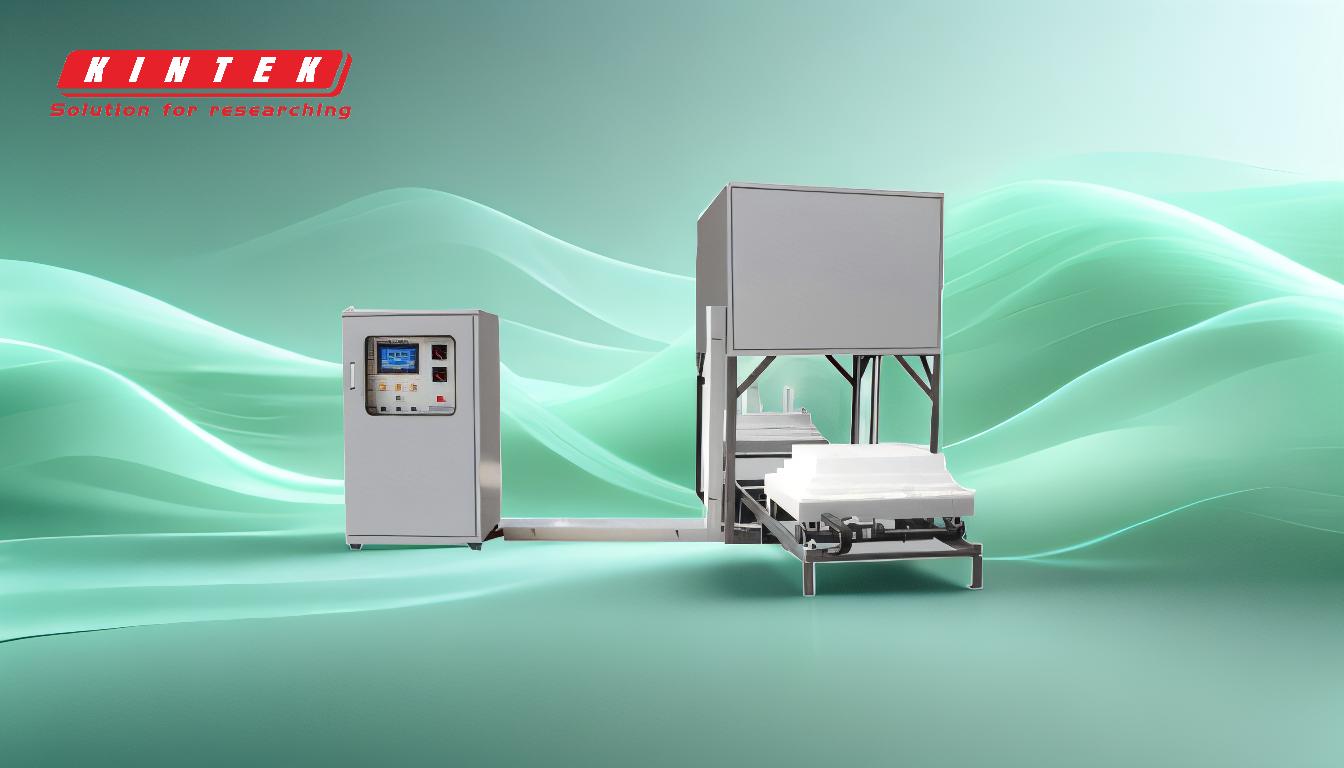Simply put, a vacuum furnace can achieve a wide range of vacuum levels depending on its design and purpose. While some specialized furnaces can reach an ultra-high vacuum as low as 1x10⁻¹¹ Torr, a more typical high-vacuum furnace using a diffusion pump operates around 10⁻⁵ Torr, with an ultimate vacuum capability of 10⁻⁶ Torr.
The specific vacuum level of a furnace is not a single standard but a critical performance metric tailored to the process. The core decision is matching the vacuum capability—from a rough vacuum for basic heating to an ultra-high vacuum for sensitive materials—to the precise requirements of the material being processed.
Deconstructing Vacuum Levels in Furnaces
Understanding the numbers requires looking at how vacuum performance is defined and measured. It's more than just one static value; it's a dynamic capability of the system.
### Ultimate Vacuum vs. Operating Vacuum
Ultimate vacuum is the lowest pressure a furnace’s pumping system can possibly achieve in an empty, clean, and dry chamber. For a furnace with a diffusion pump, this might be 10⁻⁶ Torr.
The operating vacuum, however, is the actual pressure maintained during a heating process. This level is typically slightly higher, around 10⁻⁵ Torr, as the materials being heated will release trapped gases (a process called outgassing).
### The Role of Pumping Systems
The type of vacuum pump is the primary determinant of the vacuum level.
A standard system with a mechanical pump and blower combination might achieve an ultimate vacuum of 20 Microns Hg or better. This is considered a medium or rough vacuum.
For high-vacuum applications, a diffusion pump is added to the system, which allows the furnace to reach the much lower pressures measured in the 10⁻⁶ Torr range.
### The Impact on Material Purity
The fundamental purpose of the vacuum is to create a controlled, inert atmosphere.
By removing air and other gases, the furnace prevents oxidation and decarburization of the workpiece surface. This is critical for maintaining the material's strength and integrity.
A high vacuum is also essential for removing impurities and low-temperature by-products, resulting in a cleaner, higher-quality final product with fewer defects.
### Measuring Performance: Pump-Down and Leak Rate
Two other metrics are crucial for evaluating a vacuum furnace's performance.
Pump-down time is how quickly the furnace can reach its target vacuum level. A typical specification might be 15 minutes to reach 1 x 10⁻⁴ Torr.
Furnace leak rate measures how well the system maintains its vacuum over time. A good furnace will have a very low leak rate, such as less than 5 Microns per hour, ensuring the process environment remains stable.
Understanding the Trade-offs
Achieving a higher vacuum is not always the best or most necessary goal. The engineering and financial costs rise exponentially as you approach a perfect vacuum.
### Higher Vacuum Means Higher Complexity
Reaching ultra-high vacuum levels requires more sophisticated and expensive components. This includes multi-stage pumping systems, advanced seals, and highly sensitive monitoring equipment.
### Process Requirements Dictate the Need
For many standard heat-treating applications, a medium vacuum is perfectly sufficient to prevent negative surface reactions. The expense of a high-vacuum system would provide no additional benefit.
However, for sintering highly reactive metals or manufacturing components for the aerospace or semiconductor industries, a high to ultra-high vacuum is non-negotiable to ensure absolute material purity.
### Cycle Time and Throughput
The lower the target pressure, the longer the pump-down time. For high-volume production, the ideal vacuum level is one that meets quality standards while minimizing the overall process cycle time.
Making the Right Choice for Your Application
The "right" vacuum level is entirely dependent on your material and your goal. The key is to define the necessary atmospheric purity for your process and select a furnace that can reliably achieve it.
- If your primary focus is standard heat treating or brazing: A medium vacuum (in the Micron range) is typically sufficient to prevent oxidation and ensure good results.
- If your primary focus is processing highly reactive metals (like titanium) or advanced ceramics: A high-vacuum system (10⁻⁵ Torr or lower) is essential to prevent contamination and achieve the required material properties.
- If your primary focus is research or manufacturing for sensitive electronics: An ultra-high vacuum (UHV) system may be required to create the purest possible environment.
Ultimately, understanding the relationship between the pumping system, the process requirements, and the material's behavior is key to leveraging a vacuum furnace effectively.
Summary Table:
| Vacuum Level | Typical Pressure Range | Common Applications |
|---|---|---|
| Rough/Medium Vacuum | 20 Microns Hg and above | Standard heat treating, brazing |
| High Vacuum | 10⁻⁵ to 10⁻⁶ Torr | Processing reactive metals (e.g., titanium), advanced ceramics |
| Ultra-High Vacuum (UHV) | Up to 10⁻¹¹ Torr | Semiconductor manufacturing, sensitive materials research |
Need to ensure material purity and prevent oxidation in your lab processes? The right vacuum level is critical for success. KINTEK specializes in lab equipment and consumables, offering vacuum furnaces tailored to your specific materials and applications—from standard heat treating to ultra-high-vacuum research. Our experts will help you select the perfect system to achieve your quality and throughput goals. Contact us today for a consultation and let us optimize your thermal processing!
Related Products
- Vacuum Heat Treat Furnace and Levitation Induction Melting Furnace
- Vacuum Heat Treat Furnace with Ceramic Fiber Liner
- Molybdenum Vacuum Heat Treat Furnace
- 2200 ℃ Tungsten Vacuum Heat Treat and Sintering Furnace
- Vacuum Heat Treat Sintering Brazing Furnace
People Also Ask
- What is a vacuum heat treatment furnace? The Ultimate Guide to Controlled Atmosphere Processing
- Can you harden non-ferrous metals? Yes, with the right methods for aluminum, copper, and titanium
- What is a vacuum heat treatment furnace? Achieve Unmatched Purity and Control
- What is the difference between annealing and hardening? Master the Key Heat Treatment Processes
- What are the four types of heat treating processes? Master Annealing, Normalizing, Hardening, and Tempering




















